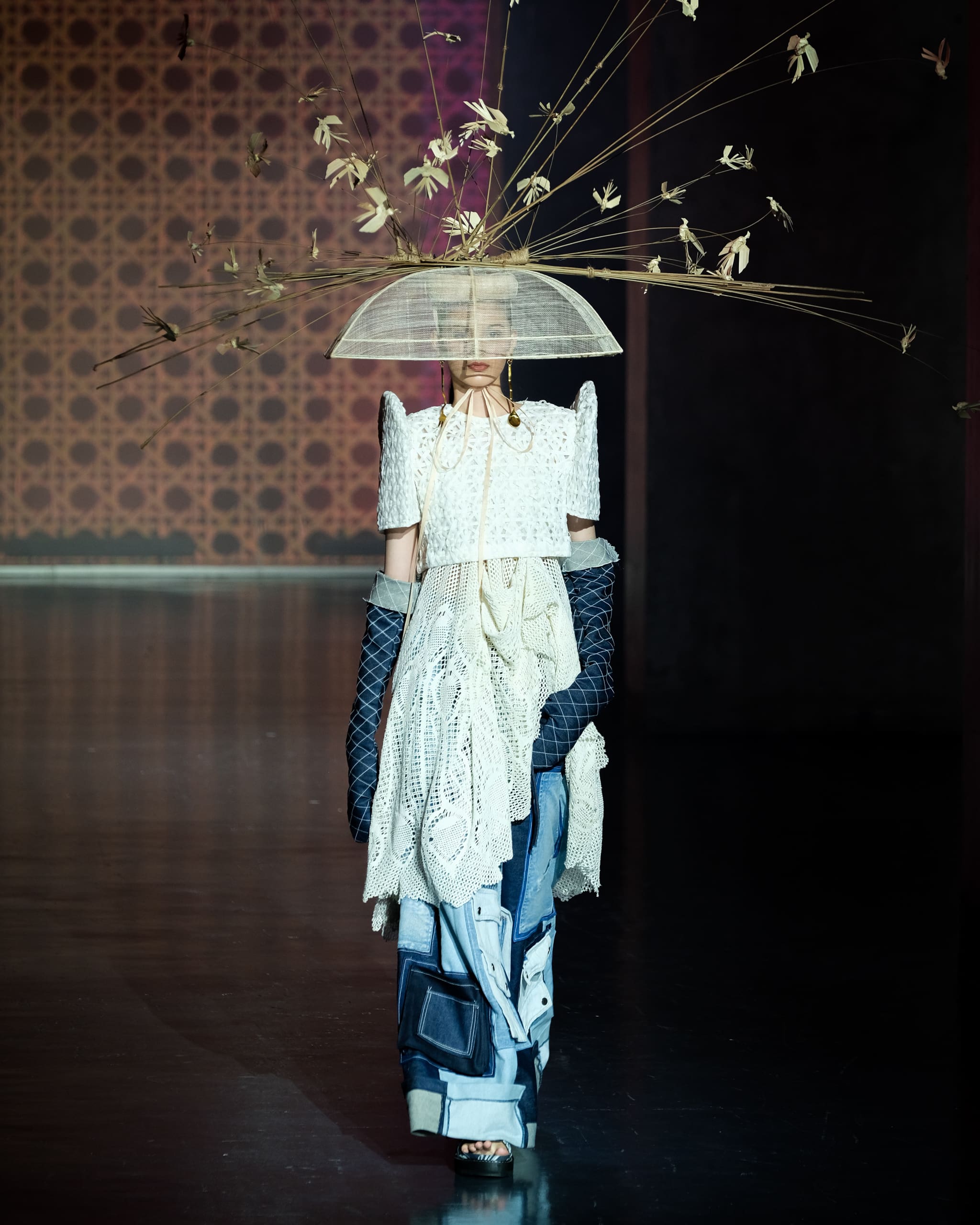Photo by Ed Simon | @monsied
The designer’s Spring-Summer 2023 collection harkens back to his childhood memories and introduces us to a more personal side of his life through fashion.
Designer Jaggy Glarino debuted his new collection at the first day of Bench Fashion Week 2023. Glarino’s collection featured pieces of reimagined kitchen accessories: tablecloth turned into dresses, woven dish covers, and table centerpieces turned into elaborate headpieces, even placemats reimagined as garments. Here are five things you should know about his culinary-inspired collection.

1/5
His main inspiration was his lola‘s kitchen
Everything about Jaggy Glarino’s new collection represents his nostalgia for a childhood spent in his lola‘s kitchen, Roming’s La Paz Batchoy and Kapehan, observing the cooking process. From the elbow-length gloves inspired by kitchen mittens, to woven plate covers and table centerpieces turned into statement headpieces and solihiya rattan woven placemats reimagined as garments, Glarino’s Spring/Summer 2023 collection references items that can be found not only in his grandmother’s kitchen but in most traditional Filipino kitchens.
He wanted to capture the full joy of cooking in his collection, from taking home fresh ingredients from the wet and dry market to preparing and presenting the food. Different types of table covers, from lace-lined white linen fabric to colored picnic blankets, were used as fabric in his garments. He used pans, straw woven market bags, and pastel-colored thermos pieces as accessories.
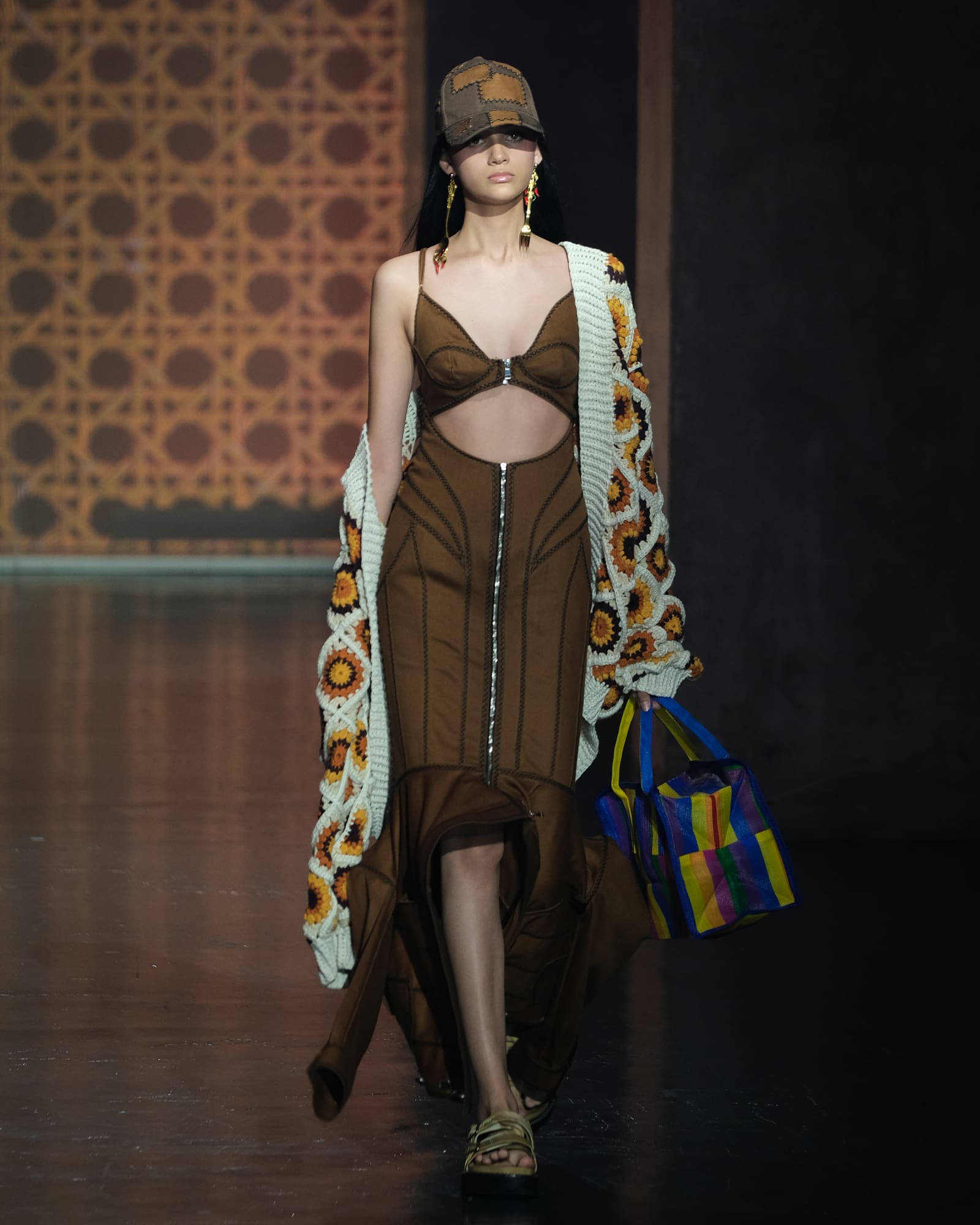
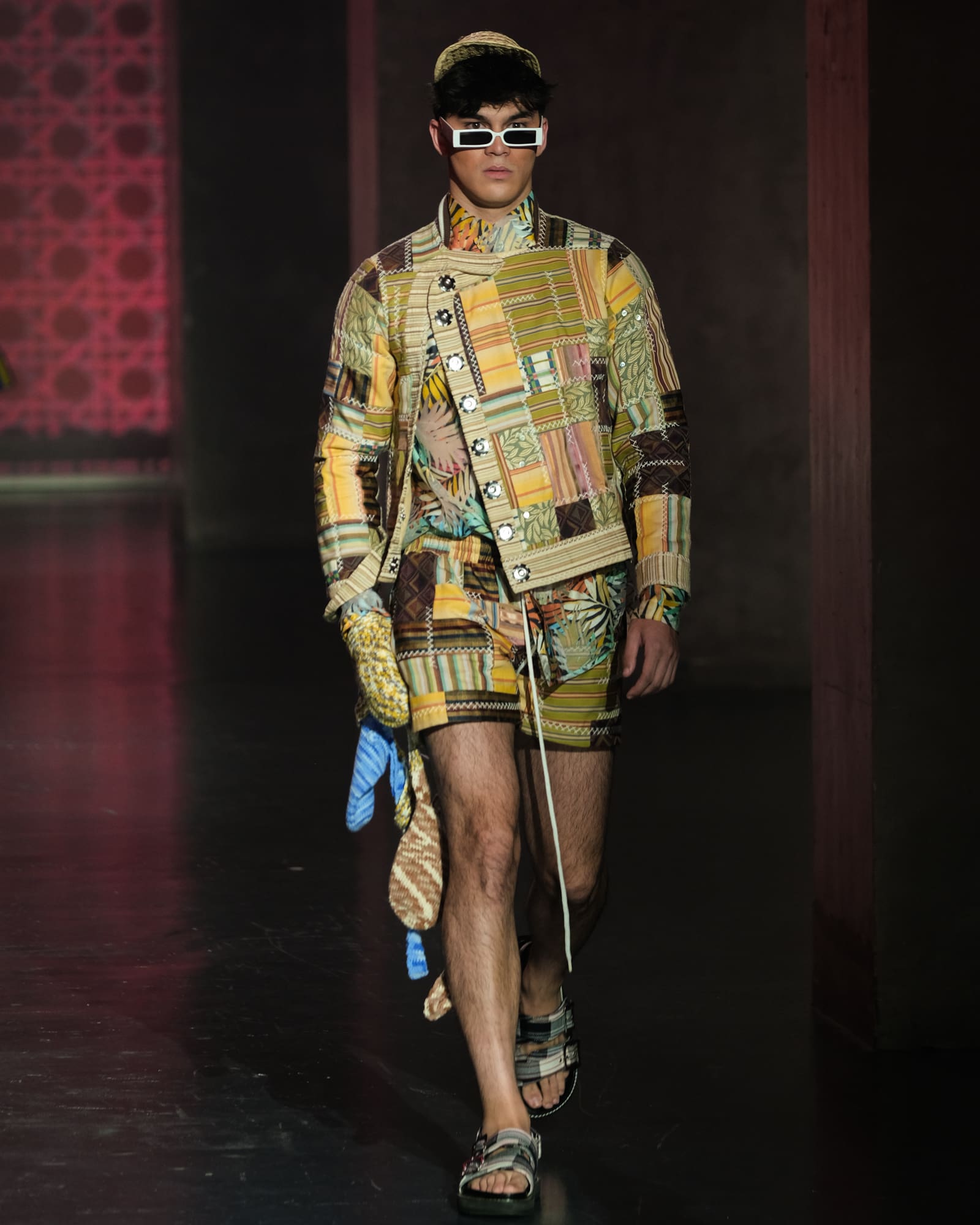
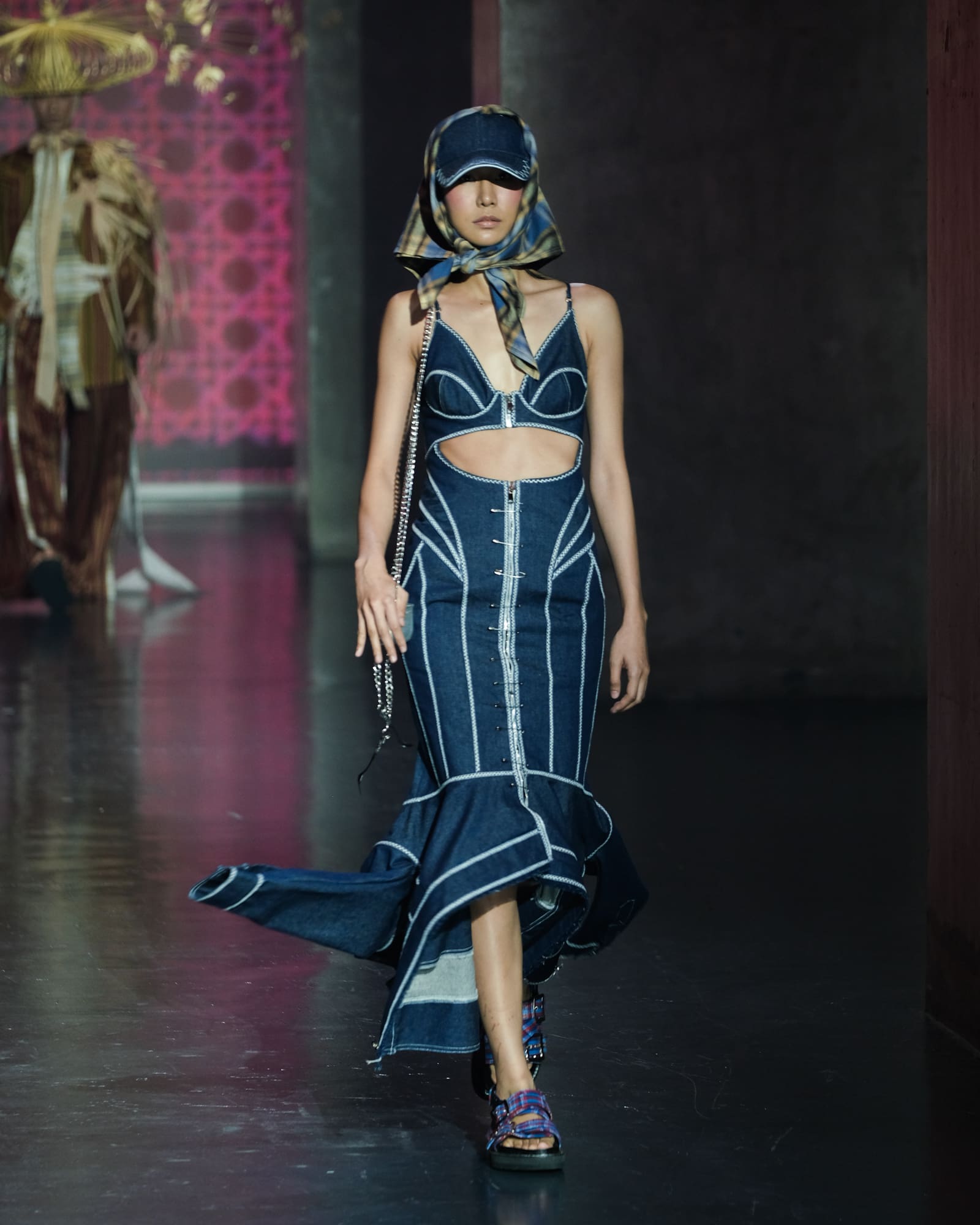
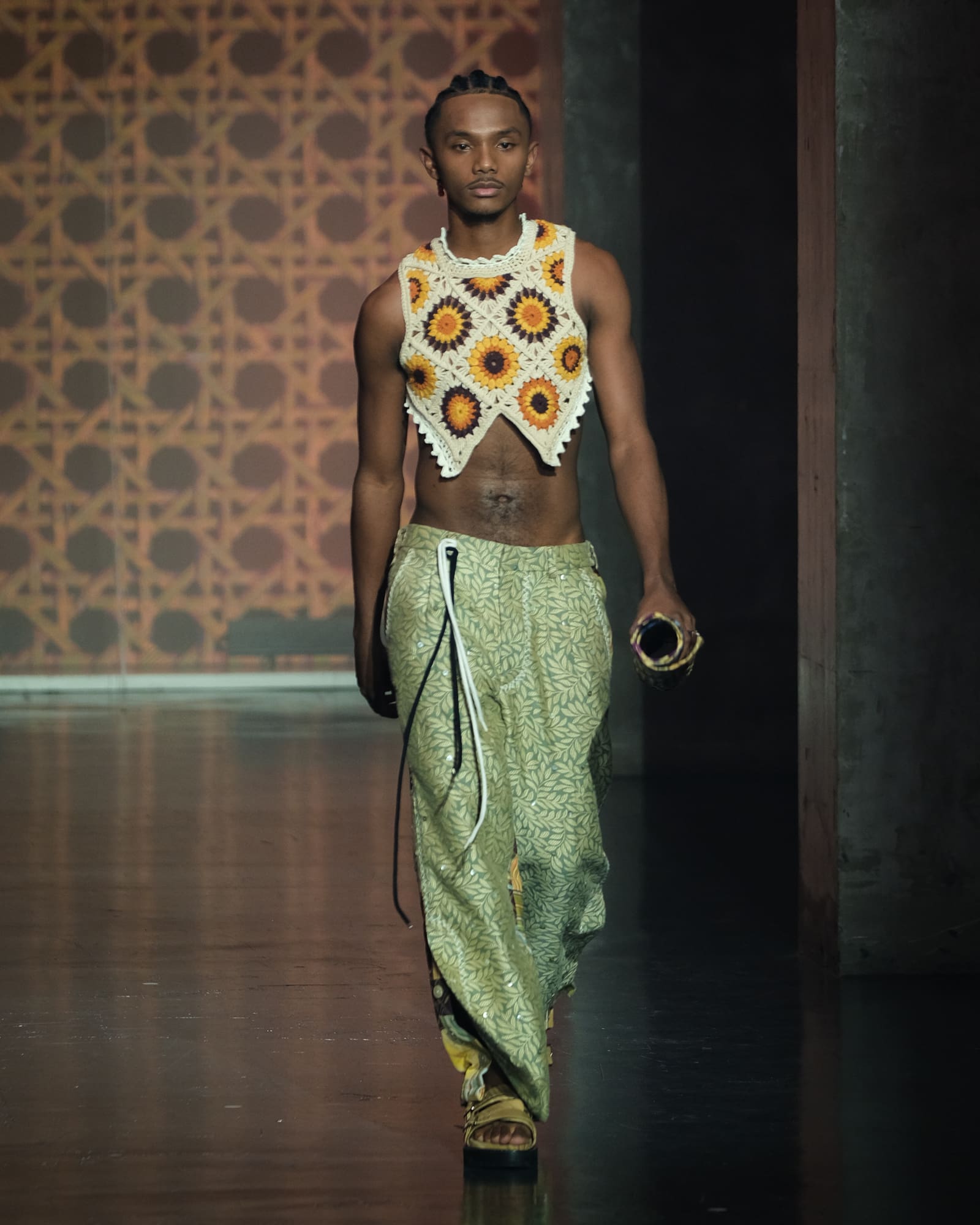
2/5
He used upcycled materials
In a desire to highlight sustainability in fashion, Glarino used upcycled materials to create some of his looks. His signature patchwork fabric was present in the pieces, mixing different shades of denim with deadstock upholstery fabric that he collected during the pandemic, lending a variety of textures to the patchwork jackets and pants. The crochet pieces are made of repurposed yarn from dismantled and reworked crochet pieces, paying homage to his grandmother practicing the craft.
“No new fabric was purchased,” he reveals. “All the fabrics were repurposed of existing garments or salvaged from my closet and bodega. I forced myself in this collection to make use of what I had. It’s not necessarily the most comfortable thing, especially when you have certain ideas. Sometimes that necessarily works in this context.”
The selvedge denim patchwork was woven into one fabric via handloom. Meanwhile, the ink for the printed silk and crepe was a collaboration with iMprintela Digital Garment Designs & Decor. Glarino meant for his fabrications in this collection to be a blueprint of what’s to come: his personal stories and his commitment to sustainability combined.
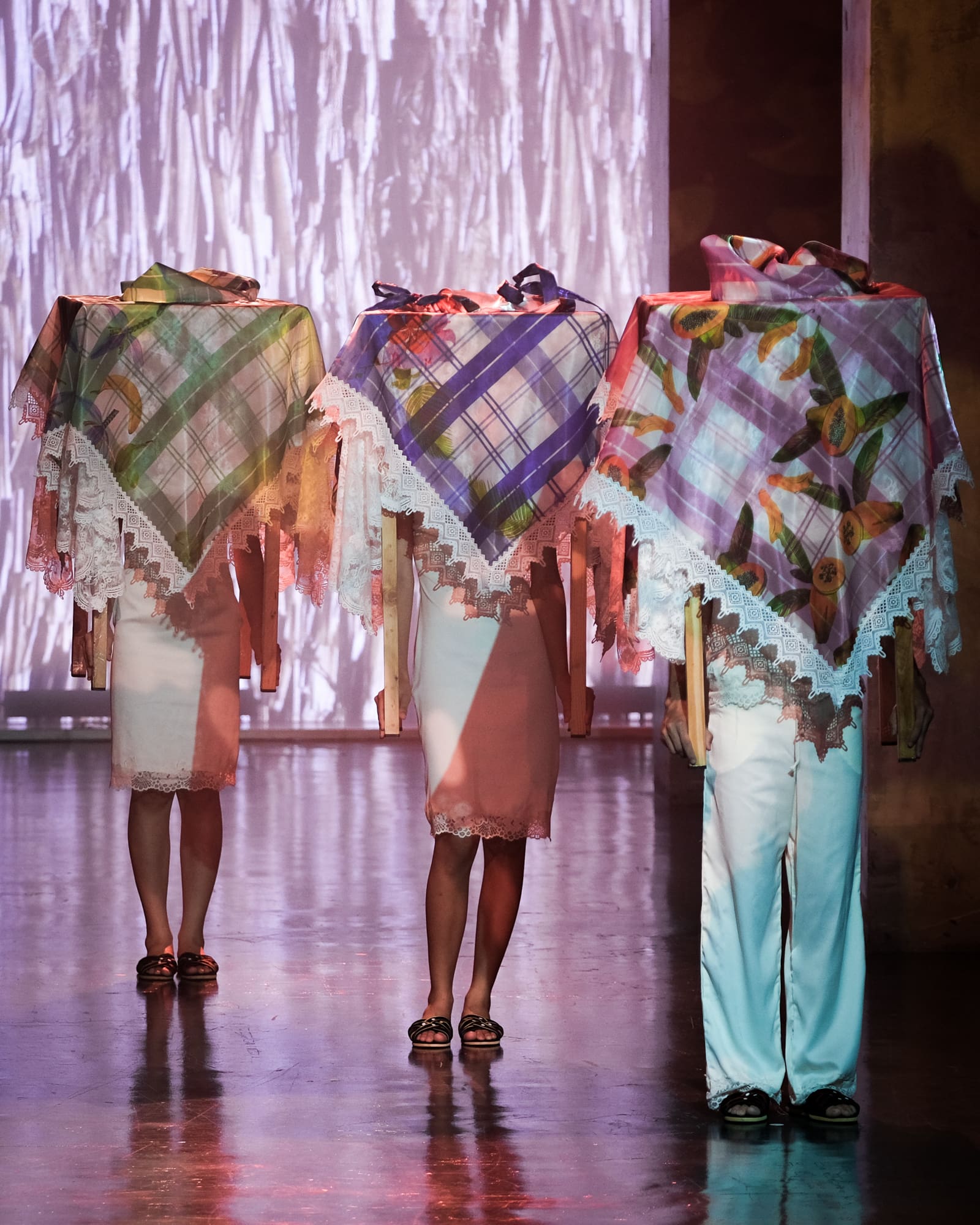
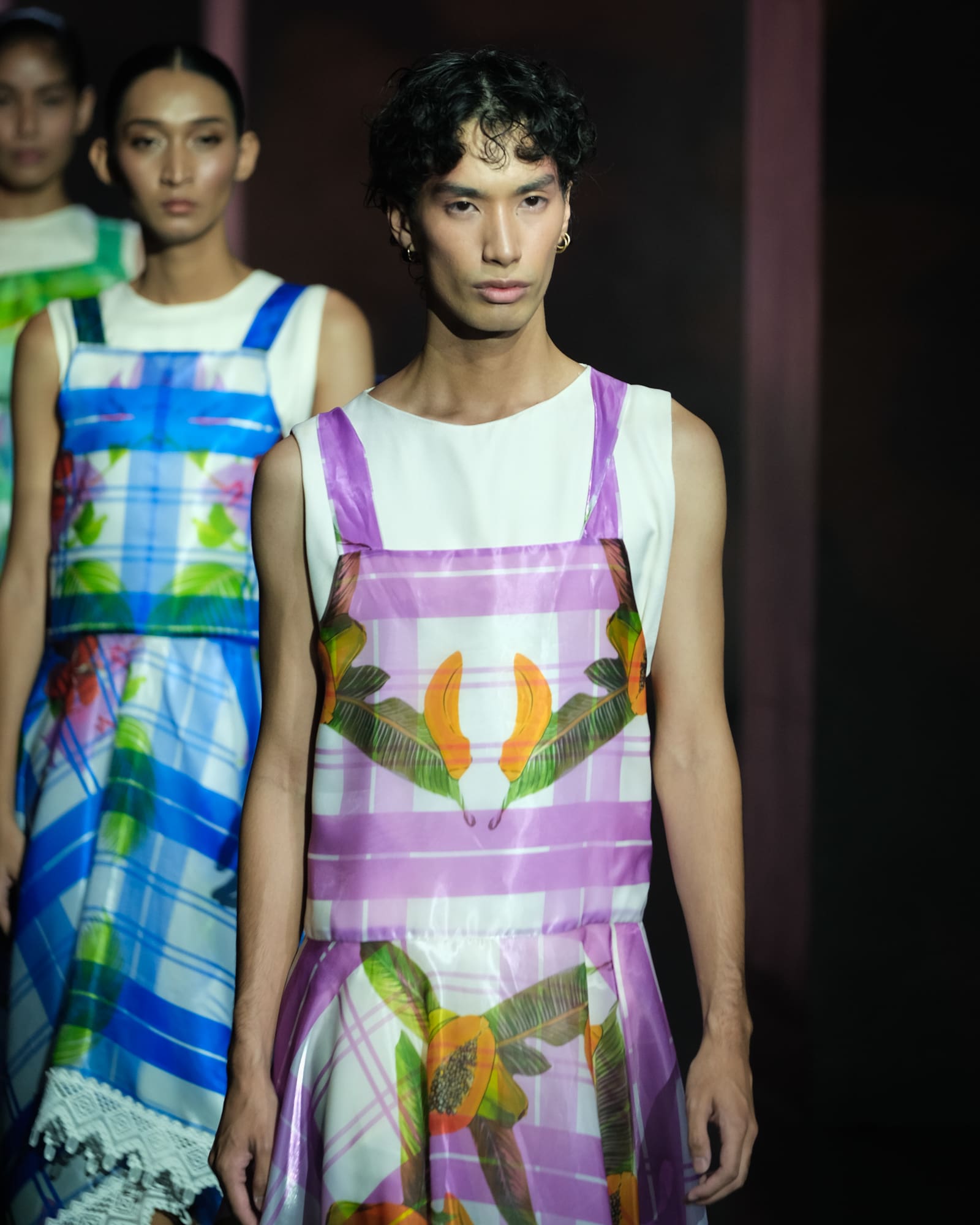
3/5
He used an Ilonggo lullaby in his mid-show presentation
In the middle of the show, models in plain white dresses emerged carrying picnic tables. Each table was adorned with colorful picnic mantles that transformed into slip-on dresses resembling aprons and lined with white lace at the bottom. Throughout this presentation, a traditional Ilonggo lullaby lent a nostalgic and at times solemn tone to the show: “Ili Ili Tulog Anay,” was what his grandmother sung him to sleep.
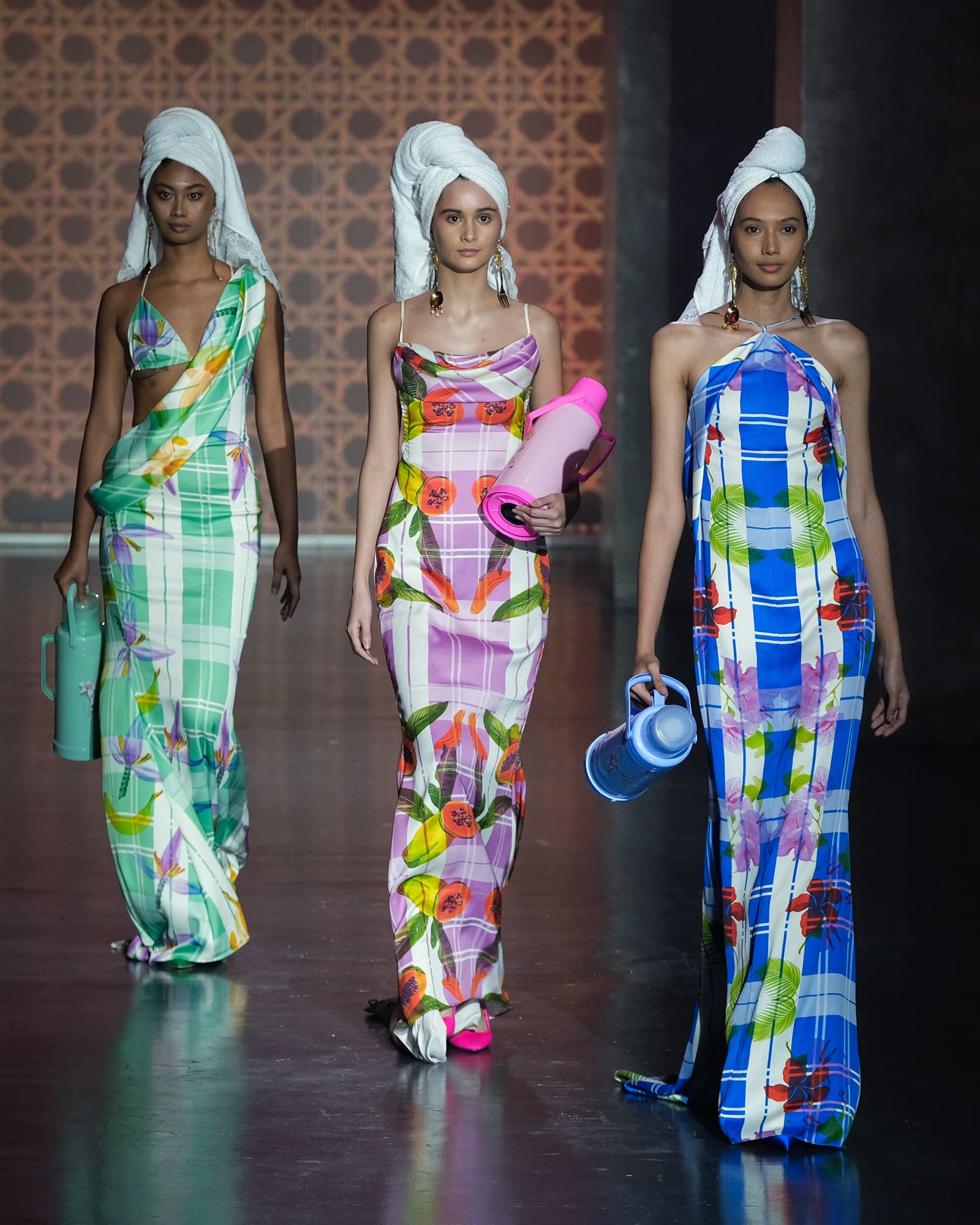
4/5
The collection is an introduction to his family
Pulling inspiration from his personal stories, Glarino portrayed members of his family through the 25-piece collection. The designer introduces his father, about to head to the morning market in a solihiya barong, carrying one of the crocheted carriers patterned after a standard sand bag; his grandmother, through all the signature solihiya woven details and crocheted elements; his sister in the kumot-printed silk dresses with tuwalya chignon and thermos; his mother in a terno with apron-like pieces of layered mantel-like lace and quilted mitts; and the coordinated set representing a scout uniform. Completing these looks are cutlery earrings and fabricated footwear.

5/5
The collection represents embracing his past
“In my journey, I realized that fashion can be an instrument for expressing personal experiences without having to explain why, and conversely, not to be scared to be judged for your past,” says the Filipino designer. “After the pandemic, I realized there is self-hate within me.”
“My first collection was about childhood, but glamorized. It’s like a mask, part of it, but it’s not the entire story,” he continues. “The pandemic prepared me to talk about my things openly and express them through fashion.”
Glarino began questioning why he was afraid to express his childhood and considered the possibility of being more vulnerable in a collection. “When you’re growing up, because you’re preoccupied with what people think, there is a part of you, not that you’re ashamed, but not necessarily proud of,” he says.
But the designer was resolved to come to terms with his past in this collection. “I created a brand that I really want,” he says. “And now, I want it to resonate with my personal experiences and who I am.”
